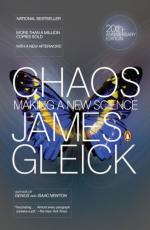
|
| Name: _________________________ | Period: ___________________ |
This quiz consists of 5 multiple choice and 5 short answer questions through Chapters 3-4.
Multiple Choice Questions
1. In the 1950s and 1960s what two technologies were maturing together, according to the author in Chapter 1, "The Butterfly Effect"?
(a) The space satellite and digital computer.
(b) The television and automobile.
(c) The automobile and space stellite.
(d) The digital computer and television.
2. In Chapter 2, "Revolution," the author writes, "Professional scientists, given brief, uncertain glimpses of nature's workings, are no less vulnerable to anguish and confusion when they come face to face with" _______________?
(a) "Cantor dust".
(b) "Turbulence".
(c) "Incongruity".
(d) "Fractals".
3. One of the implications of what theorem is that if a continuous discrete dynamical system on the real line has a periodic point of period 3, then it must have periodic points of every other period?
(a) Sharkovskii's theorem.
(b) Stronghorn's theorem.
(c) Skawinski's theorem.
(d) Stevenson's theorem.
4. In Chapter 3, "Life's Ups and Downs," Gleick writes, "In the emergence of chaos as a new science in the 1970s, _____ were destined to play a special role."
(a) Geologists.
(b) Botanists.
(c) Paleontologists.
(d) Ecologists.
5. Although James Yorke was a brilliant mathematician, he often referred to himself as what?
(a) A martyr.
(b) A philosopher.
(c) A rebel.
(d) A monk.
Short Answer Questions
1. What refers to a computer program or network of computers that attempts to simulate an abstract model of a particular system?
2. What is a branch of physics which employs mathematical models and abstractions of physics to rationalize, explain and predict natural phenomena?
3. Who is quoted in Chapter 1, "The Butterfly Effect" as saying "Physicists like to think that all you have to do is say, these are the conditions, now what happens next?"
4. Where was Edward Lorenz born?
5. Where was Hendrik Houthakker born?
|
This section contains 292 words (approx. 1 page at 300 words per page) |

|




